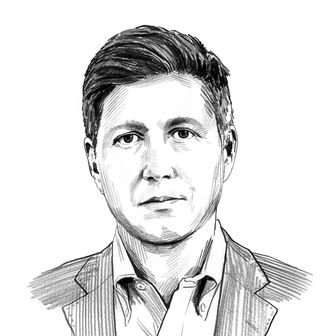
Photo: Getty Images
In March, I sat in the upper deck of Madison Square Garden, watching Roger Federer “battle” Pete Sampras in an exhibition match. This was a high-class gathering; Anna Wintour sat right behind Federer’s bench, Tiger Woods had a front-row seat, and the whole thing was sponsored by NetJets, the “world leader in private aviation.” It was something to see: two of the greatest tennis players of all time (and the best of the past two generations) facing off in the world’s most famous arena.
It was also a farce. Federer, killing time and cashing a check, played along gamely, losing points on purpose to keep the match close before the ultimate swatting-away of Sampras in the final set. Sampras worked hard enough, but his best years were a decade ago; at one point, Sampras swung and whiffed on an easy volley. The crowd groaned, Sampras scowled, and Federer, to his credit, resisted a giggle. The display did no favors to either’s legacy. But that wasn’t the point, at least not for Federer; it was a payday, yes, but it was also a way to turn himself from robotic tennis machine into a global superstar. The process was well in motion; he was setting up endorsement deals in Dubai, making Time’s list of the 100 most influential people, and getting photographed by Annie Leibovitz. But New York was the real prize. Making a major splash here could turn him from a notoriously bland Sampras-type into something closer to the marketing behemoth that is his friend Tiger. But you couldn’t help but wonder: For all the tangential benefits of goofing around with Anna Wintour and Pete Sampras, didn’t this guy have an actual tennis career to be working on? He was two major titles behind Sampras’s record of fourteen; this couldn’t be the right way to go about breaking that, could it?
And here we are, five months later, and it has all backfired. While Federer was playing in exhibitions, noted rival Rafael Nadal was planning his ambush, one that culminated in the epic Wimbledon final last month. Since that night at MSG, Nadal has usurped Federer in every possible fashion. He beat Federer in the French Open for the third straight year, won that Wimbledon, took over his No. 1 world ranking, and, for good measure, won a gold medal in Beijing. Meanwhile, Federer was looking more mortal than ever. Not only was Nadal beating him on a non-clay court (finally): Federer lost to James-freaking-Blake in the Olympics.
Theoretically speaking, if there were ever a time to remind the world that he’s Roger Federer, dammit, this would be it; Wimbledon has the tradition, but the U.S. Open is where stars are made. But, in the strange world of professional athletics, Federer might be too old to recover. He turned 27 last week, which seems young until you realize that Nadal, who finally vanquished his perpetual conqueror, is five years younger and clearly hungrier. And age certainly matters in tennis. Bjorn Borg won his last Grand Slam at 24 (and made an ill-advised comeback thirteen years later); John McEnroe’s came at 25. Andre Agassi and Pete Sampras are the exceptions, and they had styles more based in guile and volleys than Federer’s power; in baseball, they would say that Federer has “old player skills.” (Think Ryan Howard; when they reach a certain age, they tend to decline rapidly.) Federer has never been challenged like this in his career, and it’s an open question as to whether he has the desire, or moxie, to rebound in time.
Federer thought he would come into next week’s U.S. Open as the conquering hero, the superstar with all the glamour he supposedly lacked. That was the point of the Sampras exhibition and Anna Wintour friendship. Now? He has lost his top ranking, his theoretical “best player of all time” title, and, if you haven’t noticed, it’s not him who’s on the cover of the fashion magazines (and this one): It’s Nadal.






























